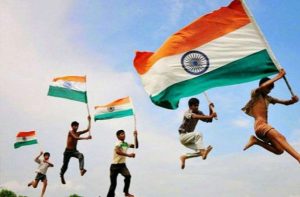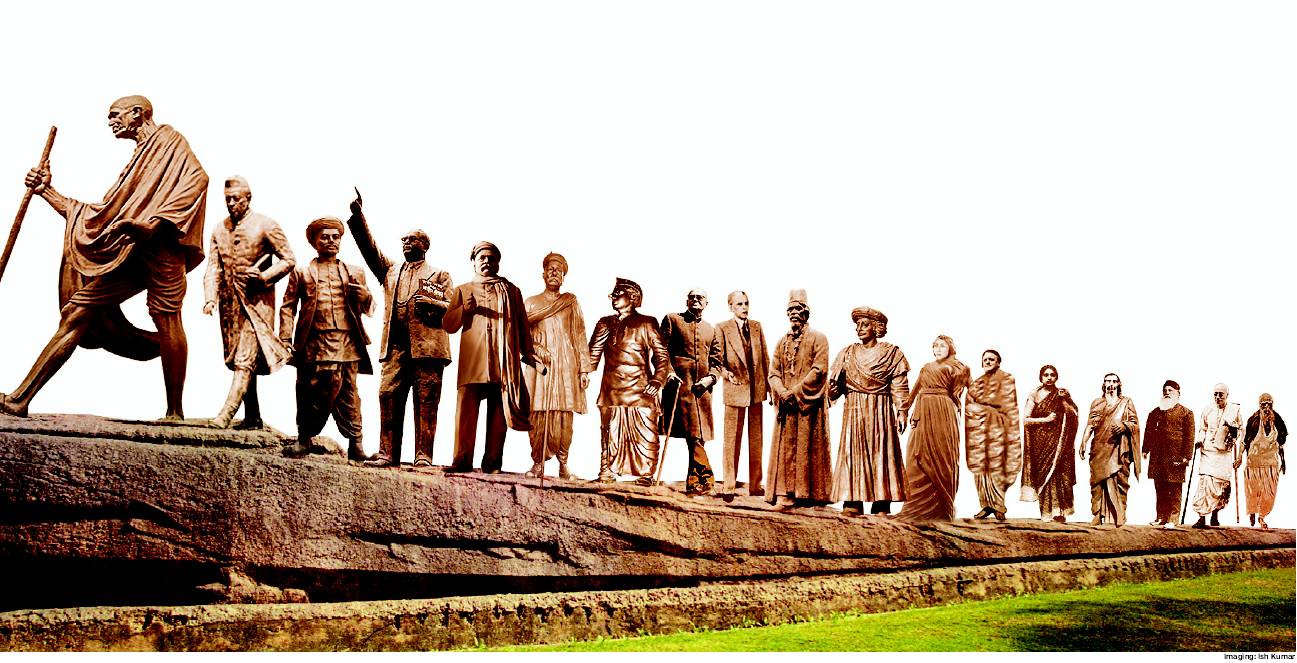Table of Contents
India and Indian National Movement
As far as we consider the History of India and Indian National movement have been through a series of struggles for Freedom including Political, Socio-Culture and Economical factors. As we see the past of India it contains a huge number of incidents which were important at that time and are considered as a one of the most important part in Indian history and specially for Exams like UPSC.
Indian National Congress (INC)
With the increasing Political influences at that time, the INC was founded on 28 December 1885 in the premises of Gokuldas Tejpal Sanskrit School at Bombay.
Real Aim of Congress was to train the Indian youth in political agitation and to create public opinion in the country. For this they use the method of annual session where they discuss the problem and passed the resolution. It came out to be one of the most important part of freedom of India and in the history of India and Indian National Movements.
Other Political Movements
- Muslim league was founded in 1906 by Agah Khan III and Moshin Mulk.
- Gadhar Movement was started by Lala Hardayal in 1913 and founded the Gadhar party on 1st November 1913 at Kotland. Its headquarter was set up in San Francisco and started the publication.
- Komgata Maru Incident took place on Sept. 1914 and a committee was setup named as Shore Committee to fight the legal battle of passengers.
After the start of First World War in 1914.
Some of the most important movements in History of India and Indian National Movement.
- Tilak on April 1916 started Home Rule Movement and it’s headquarter was at Poona and demanded Swaraj.
- Annie Besant on September 1916 started Home Rule movement and it’s headquarter was at Adiyar near Madras.
- In 1916 Lucknow Session of Congress was presided by Ambika Charan Majumdar where both Extremist and Moderate leaders were united.
- Government of India Act 1919 or Montagu- Chelmsford Reform Act was passed to establish a responsible Government in India.
- On 9th January 1915 Gandhi ji return to India from South Africa at the age of 46.
- In 1916 Gandhi Ji founded Sabarmati Ashram at Ahmadabad (Gujarat) to preach the idea of truth and non-violence.
- Champaran Satyagraha – 1917
- Kheda Satyagraha – 1917
- Ahmadabad Mill Strike – 1918
- Rowlatt Act Satyagraha February,1919
- Gandhi ji founded the Satyagraha Sabha in February, 1919. In this movement student, middle class, labour and capitalist participated and congress as an organisation was nowhere. This was the first mass movement of Gandhi ji.
- Jallianwala Bagh Massacre on 13 April, 1919. People were gathered at Jallianwala Bagh in Amritsar to protest against arrest of Saifuddin Kitchlew and Satyapal on 13 April 1919.
- On 1st August 1920 Khilafat Committee launched a Non-Cooperation movement on triple issues- Punjab wrongs, Khilafat issue and Demand for Swaraj.
- In October 1920 All India Trade Union Congress was founded in Bombay by N. M Joshi, Ray Chaudhary. Presided over by Lala Lajpat Ray
- Akali Movement was started in 1920.
- In 1925, SGPC (Shiromani Gurudwara Prabhandak Committee) was founded.
- Congress Khilafat Swaraj Party was formed by CR Das and Motilal Nehru. Also famous for the second split in the congress.
- In 1927, Workers & Peasant Party (WPP) was formed at Bombay by S.S Mirajkar, K. N Juglekar and S.V Ghate.
- In 1924, H.R.A (Hindustan Republican Association) was formed at Kanpur. Its members were CS Azad, Sachin Sanyal and Ramprasad Bismil.
- In 1929, HSRA (Hindustan Socialist Republic Association) was formed at Firozeshah Kotla Delhi. Bhagat Singh joined HSRA.
- On 9 Aug, 1925 Kakori Train Dacoit, in this conspiracy case Ram Prasad Bismil, Rajendra Lahiri, Roshan Lal and Asafaqullah khan were hanged to death.
- On 23rd March, 1931 Bhagat Singh, Rajguru and Sukhdev were hanged to death in Lahore Conspiracy Case.
- On 8 November, 1927 Simon Commission was appointed by the British Conservative Government under Stanley Baldwin. To inquire in the working system of Government in the country after the reform act of 1919.
- Nehru Report- 1928 for dominion status, universal adult franchise, etc.
- Jinnah’s 14 point programme on 31st March, 1929.
- 1929 Lahore Session of INC presided by Jawaharlal Nehru where the resolution of Purna Swaraj was passed by the congress and decided to launch a Civil Disobedience movement under the leadership of Gandhi ji.
- On 26th January, 1930 Independence Day was celebrated for the 1st time.
- Civil Disobedience Movement was started with the Dandi March. From 12 March to 6 April , 1930 Gandhi ji along with his 78 followers marched from Sabarmati Ashram to Dandi and broke the salt law by making salt on 6th April 1930.
- On 12 November, 1930 First Round Table Conference was held.
- On 5th March, 1931 Gandhi Irwin Pact was signed.
- On 23rd March, 1931 Trial of Bhagat Singh, Rajguru and Sukhdev.
- On 29 March, 1931 Karachi Session of INC, presided over by Vallabh Bhai Patel. In this session first time a resolution of Fundamental Rights and Economic policy was passed.
- On 7th September, 1931 Second Round Table Conference was held in which Gandhi ji participated on the behalf of congress.
- On 16th August, 1932 Communal or Ramsay Macdonald Award was announced.
- On 26th September, 1932 Poona pact was signed.
- On November, 1932 Third Round Table Conference was held.
- In 1935, Governmnet of India Act was passed to create All India Federation, Provincial Autonomy and Diarchy should be there in the centre.
Towards Quit India Movement

- On September, 1939 IInd World War broke out and India was declared an ally without its consent.
- In 1939 S.C Bose founded Forward Bloc. It was a left party.
- On 10th August, 1940 – August Offer was announced by Lord Linlithgow viceroy to get the support of Indians in the Second World War.
- On 11th March, 1942 Prime Minister Winstill Churchill announced for sending a mission under the chairmanship of Sir Stafford Cripps to find out the solution of constitutional deadlock and problems of Indians.
- With the failure of Cripps Mission Quit India movement was started in 1942 by the Indian leaders and the resolution of Quit India and it was drafted by Gandhi Ji. Gandhi ji gave a call for Do or Die.
- In 1942 – Indian National Army was founded by Captain Mohan Singh and Niranjan Gill at Singapore. S. C Bose took over its command of 2nd Headquarter at Singapore and Rangoon.
- On 21st October, 1943 – Azad Hind Government was set up at Singapore under S.C Bose. There was a women regiment known as Rani Jhansi.
- In 1945, Second World War was ended.
- In 1945 – Shimla Conference or Wavell Plan was proposed by Lord Wavell to solve the political deadlock.
- In 1946, Cabinet Mission Plan was announced by PM Clement Attlee.
- On 2nd September, 1946 – Interim Government was set up under J.L Nehru.
- On March, 1947 – Lord Mountbatten was send to India with an aim to find a way to transfer of power. Also known as Plan Balkan.
- On 3rd June Independence of India Act 1947 was passed by which powers were transferred to two Dominion States India and Pakistan.
- After reading about the history of Indian National Movement we come to know about Extremist and Moderates.
Who were Moderates and Extremist
While in session of Surat in 1907 the Congress was split up into two factions which came out to be known as moderates and Extremists. The moderates has their hold on the party while extremists followed a bold path and independent path.
It gave rise to many of the national movements which led to the Freedom of India. Both the extremists and moderates played a important role in History of India and Indian National Movement and its Freedom.
Radical Nationalists
“Swaraj is my birthright and I shall have it” said Tilak. Aurobindo Ghosh declared, “Political freedom is the life-breath of a nation.” Lala Lajpat Rai thundered, “Indians should no longer be content to be beggars whining for favours; for, if they really cared for their country, they would have to strike a blow for themselves.” These ideas were too radical to the contemporary thinking. Their authors, therefore, came to be known as the radical nationalists. Being too restive for the results, they were also called the extremists or the militant nationalists.
If we come out to read in details about History of India and Indian National Movement and its every movement its hard to cover each and every part of Indian History though we will try to write about each and every part of India and Indian National Movement in our posts until we are attaching a pdf by Developing India Group which contains every thing Titled “History of India and Indian National Movement” by D.S Rajput.
History of India and Indian National Movement by D.S Rajput pdf : Download Here
OR
You can buy the book Titled “History of India & Indian National Movement for Civil Services (Preliminary) Examination” by from here : Buy now

Nice info
thanks 🙂
Very nice information… Thank you for this Article